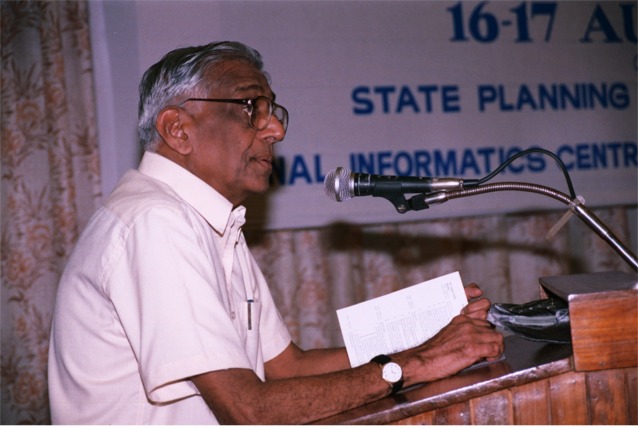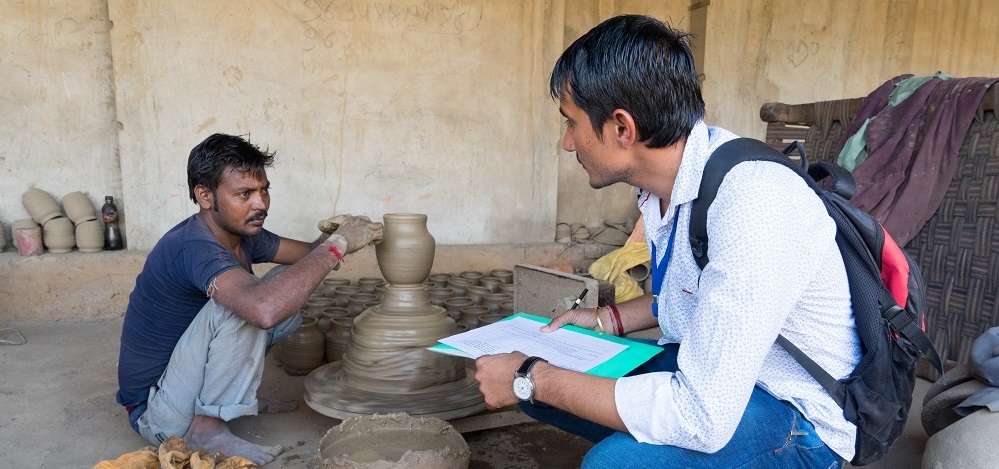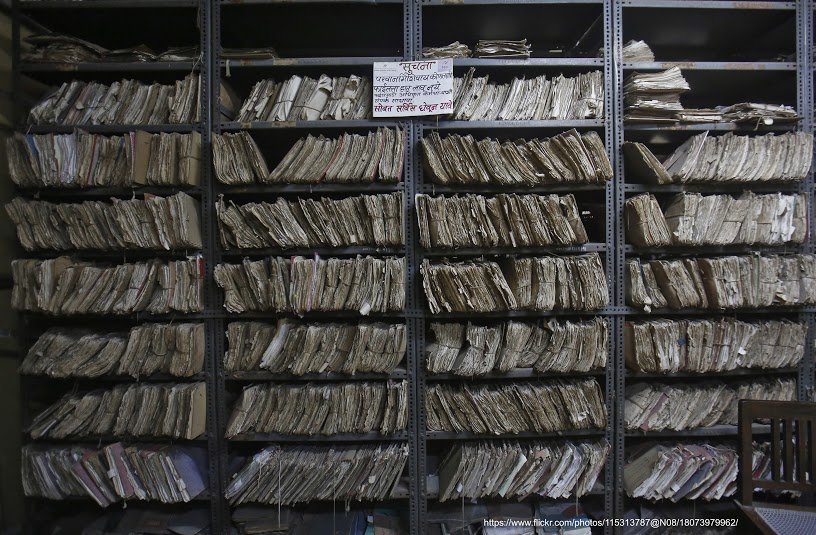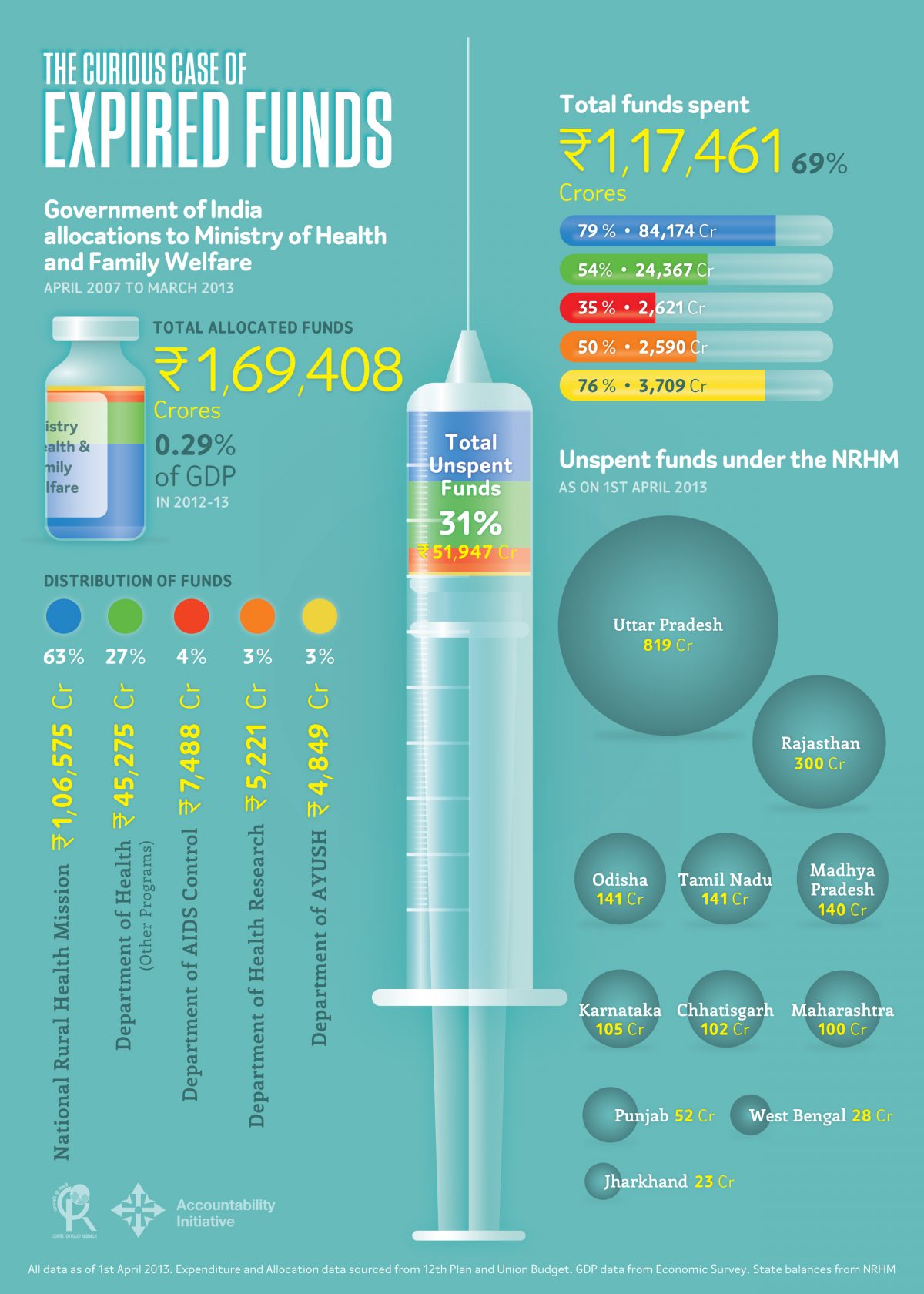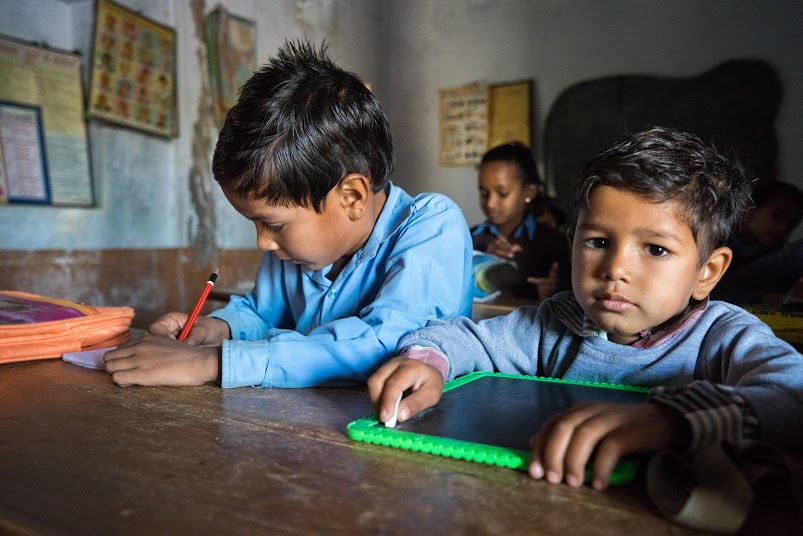We’ve been in Bhojpur, Bihar for some days now, surveying several individuals associated with government funded education for a project. On 1st September we heard that the Prime Minister was going to address all school children and teachers on the occasion of Teachers’ Day. Since we were already on the field, visiting schools daily, we decided to observe the way this was carried out in randomly selected schools, right from the formal dissemination of this news at the ground level to obtaining post-speech-reactions.
Formal announcement of PM’s 5th September address at the monthly block level meeting of Head Masters (03.09.2014)
9th point on the 10 point agenda read out by the Block Resource Person conducting the meeting – “PM’s address to all students on the occasion of Teachers’ Day.”
The notice stated that all schools had to arrange a TV or radio (TV, preferably) for the occasion. Rs. 1000 could be spent on 200 students present for the broadcast, Rs. 1500 for up to 500, and Rs 2000 for over 500 students listening in or viewing the broadcast. Schools were to stay open till 5 PM on 5th September.
“How are we going to arrange the money for this? We haven’t received any funds this year!” asked Headmaster A. “Doesn’t matter if it’s 1000 or 2000. Just know that you’ll have to spend from your own pocket to make this happen” replied Headmaster B who was sitting at the panel with the BEO and the BRP. Discussions broke out amongst the attendees. The Block Education Officer (BEO) silenced the room and suggested that they reach into their school’s development fund from last year to “manage the issue”.
“But there’s no electricity in our school!” shouted Headmaster C from the back. “Then use radios! Bring one from your own home if there is no other option” the BRP shouted back. A Cluster Resource Centre Coordinator (CRCC) who was sitting in the front row asked calmly, “But sir, where is the space to seat 500 odd kids in our schools?” “How can WE (the BRP and BEO) give you all the answers? You know your schools better! Jahaan samasya hoti hai, wahaan samadhaan bhi hota hai!” the BRP announced grandly.
“Headmasters, you are your school’s guardians. I’m sure you will manage this problem as well. Please exercise your best judgement and make it work” said the BEO.
“We have the money, but if we’d been informed earlier, we could’ve made the proper arrangements. But this is a government order. We will try our best to make the arrangements despite the short notice. Please move to the next point on the agenda…” said Head Master B. Murmurs of agreement were heard from the audience.
The BRP began reading the next topic but was interrupted by a teacher who appeared to have been lost in his own thoughts – “But where are we going to find a radio…? Internet ka zamaana hai…” “You have your mobile phone! It has radio facility!” said the BRP and BEO, almost at the same time, both sounding equally exasperated. Head Master E suddenly got up and announced, “Sir, September 5th is a Friday. Urdu schools wind up early so that people can go read namaaz…”
“But this is a special programme! We didn’t have an off on 15th August this year either, right?! Please! Adjust! I know you can do it. Ho jaega!” the BRP said firmly, not looking up from his register. Multiple voices from the audiences were heard saying, “Haan, ho jaega…ab aage badhiye!” Many were laughing loudly and saying that they would “definitely manage”.
The BRP re started reading but was interrupted again. Head Master B: “Why don’t schools with little space and/or no tv/radio “merge” with a nearby school that has these things? It will be like the way we merge schools without buildings with schools that have more space and other facilities.” “Yes, these schools could pool their financial resources to arrange a tent or generator to power the TV as well” added the CRCC. The audience was abuzz again. “GREAT IDEA” barked the BRP, sounding quite harried by now, and quickly raced through the next topic.
D-Day (05.09.2014)
Around 2 PM
As we finished interviewing a CRCC, we heard loud music emanating from a nearby classroom. We stepped inside and found some kids dancing to Bollywood tunes. A tiny television set sat in the background. DD National was on but the reception was extremely grainy. The Block Resource Centre, where the BEO’s office is located, is a stone’s throw away from this school.
I interacted with the kids and inquired about the day’s programme. “Narendra Modi ji will give a speech today!” they all replied. Who is Narendra Modi? “Our Prime Minister!” But aren’t speeches boring? “No! He’s making this speech especially for us!” they all shouted enthusiastically.
2.40 PM
We dropped two of our team mates at school no. 2, an Urdu Primary school, and headed out to check out other schools in the area.
School no. 3 was barely two KM away from School no.2 and was adjacent to the road. We expected it to be running in full swing considering it was a huge middle school and was easily accessible. Schools located along main roads tend to be more functional (apparently) for fear of unsuspected monitoring. This school, however, was deserted. “Where is everyone?” I asked a couple of women busy chatting away near the school. “Don’t know”, said the youngest of the lot. “School was shut around 1.30 PM itself.” But isn’t the school supposed to run till 5 PM today? “I’m not sure but it could be because of Jhoori (a day when women fast for their brothers’ health) so they must have been let off early”, said an elder woman. “Na! It’s Teachers Day, so school was shut early” said the youngest one.
3 PM
School no. 4 was inaccessible by car so we plodded down the muddy path and found a few kids playing near the school. The headmaster came out to welcome us and took us inside a classroom. We saw around 20 girls and a couple of boys sitting quietly. Two teachers stood in the front, facing the students. One of them had a radio in his hand which he held in an awkward angle to catch a decent signal. It wasn’t really working. One could barely make out what the HRD Minister was saying. I spoke to the other teacher who told me that the radio belonged to the teacher who was holding it up. Students were less in number due to Jhoori so most girls and all the lady teachers had been let off early. Students of classes 1 and 2 were also given half day. “They wouldn’t understand the speech, anyway”. We spent few more minutes there and then headed for the next school. The teacher with the radio in his hand didn’t move a muscle all that while.
School no. 5 was, again, in the interiors. It was a single-room-primary-school. The sole door was locked and completely empty. We spotted three locals sitting at some distance, eyeing us. My team mate asked aloud, “Bhashan nahi chal raha?” One of them shouted back, “Na, ration aaj nahi mila!”
School no. 6 was close to School no. 5 and was practically hidden behind dense foliage. Not a soul in sight, again. A passerby stopped and told us that the school had been shut by 1.30 PM itself as it was Teachers’ Day. “So what about the speech?” “What speech?” Two more locals stopped to listen in. I told them about the special programme. One of them asked, “PM ji kis cheez pe baat karenge?” “Achhe din pe baat karenge, aur kya karenge…” commented the second man.
We went back to school no. 2, the Urdu school, to pick up our team mates, listening to the PM’s speech in the car all the while. Our team mates spent their entire time at the same school and stayed a little longer to see the reactions of students and teachers. They reported that the 50 odd kids who were listening to the speech on the radio got distracted easily due to the poor signal. Many of them were running about, playing, and those who were forced to stay put weren’t really paying attention. Few students from a nearby school were also present here. The television at their school had stopped working so they hitchhiked on their own to this school. After the speech ended the headmaster spoke on the importance of Teachers’ Day and summarised some points made by the Prime Minister. The kids, however, could not answer any of the questions when the headmaster quizzed them on the speech.
Later, the headmaster shared that he hadn’t been keen on organising this programme. Urdu schools are closed on Fridays, said the headmaster. They had convened an “emergency meeting” with the School Management Committee on this matter a day before the programme. Members had decided against keeping the school open but his CRCC suggested otherwise. If any higher official found out that their school was shut that day then action could be taken against them, the CRCC warned him. Consequently, the headmaster ended up following the CRCC’s advice.
(06.09.2014)
Next day, we went to a primary school which we had visited twice already in our attempt to speak with the headmaster. The first time he was away to collect a cheque book and so had taken the day off. The second time (on the day of the speech) he had gone to purchase a radio set. We finally managed to find him at the school but before our interview we interacted with the students of classes 3 and 4, asking them about the speech. They all seemed to have heard and liked what the Prime Minister had to say. Two students shared that they liked best about the speech – the Prime Minister’s antics as a child. The two teachers who were present in the classroom also appeared pleased with the speech but wished the Prime Minister had more to say to the teachers.
(08.09.2014-11.09.2014)
For the next few days we surveyed five schools in a block located far from the district headquarter. None of these schools had made the arrangements although the headmasters were aware of the programme. At one school the students shared that they saw the movie “Nadiyaan ke Paar” on the occasion of Teachers’ Day and were let off early. The headmaster however stuck to his story, saying that he did air the speech. At another school the teacher who we were interviewing said that they aired the speech but the students revealed otherwise. We also got to know that the headmaster (who was away at the time of the interview) had been thrashed by village folk on Teachers’ Day over a mid-day meal related issue. The teacher then recanted his story and said that they could not air the speech due to this unfortunate incident.
Perhaps it’s time the Prime Minister specially addressed teachers as well? Maybe on Children’s Day?




